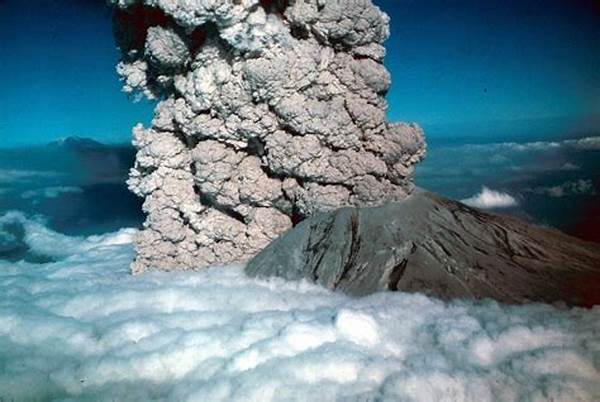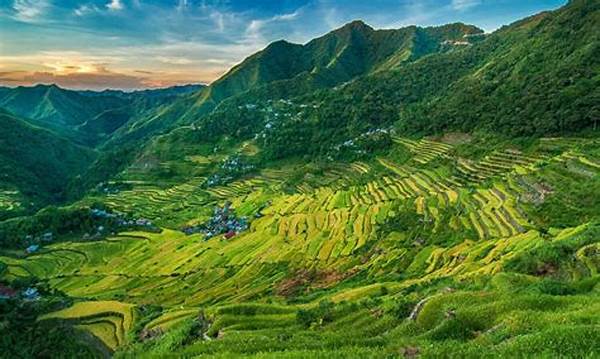Imagine standing at the edge of a recently erupted volcano, where the earth still grumbles beneath your feet and the air is filled with the potent scent of ash. The landscape post-eruption seems like an otherworldly scene from a sci-fi movie, stark and captivating in its raw beauty. Such dramatic transformations can be not only awe-inspiring but educational, offering profound insights into the resilience of nature and the inevitability of change.
Read More : Ethical Wildlife Encounters In Natural Areas
Our mission today is to delve into this transformative journey of mountains after an eruption. Why? Because understanding these changes not only satisfies human curiosity but also equips us to better navigate the challenges posed by volcanic events. Picture the mountain reborn from its eruption, teeming eventually with new life and ecosystems, a testament to resilience—this is not just an event but a symphony of change where every transition heralds a new beginning.
The Dramatic Aftermath of an Eruption
When a volcano erupts, its immediate aftermath is a chaotic spectacle. Scorching lava flows down the mountain’s sides, incinerating everything in its path. Forests that once blanketed the slopes are reduced to smoldering remnants. The air is thick with volcanic ash, which can spread over vast distances, impacting climates and ecosystems far from the eruption site.
Yet, this initial destruction sets the stage for a fascinating sequence of events. The first noticeable change is the temperature. Hotter than the surface of the sun, the lava flows solidify, creating a new crust on the mountain—a living monument to the eruption’s ferocity. The landscape is left barren, but it is far from lifeless. As time passes, pioneer species such as lichens and mosses start to take root. These organisms are the vanguard of nature’s recovery efforts, slowly breaking down the new rock into soil that will eventually support more complex plant forms.
The Rebirth of Life
As the mountain cools and stabilizes, a process of ecological succession begins—a renaissance that transforms the seemingly desolate landscape into a bustling ecosystem. Ash enriches the soil with minerals, promoting vigorous plant growth. Grasses and shrubs start to appear, followed by forests that creep up the slopes over decades, sometimes centuries. This re-greening is a vivid illustration of nature’s adaptability and resilience in the face of adversity.
Animals also slowly return, drawn by the new vegetation. Insects, birds, and mammals repopulate the area over time, creating a new ecological web. The mountain, once feared and enigmatic, gradually becomes hospitable again—a sanctuary teeming with life, every organism a testament to survival and renewal. The story of a mountain’s rebirth after an eruption is not just a tale of destruction but one of resilience, offering a powerful analogy for overcoming challenges.
A Geological Perspective
From a geological standpoint, the mountain undergoes substantial alterations. The topography is often dramatically changed—new hills and valleys are formed by lava flows and pyroclastic deposits. The mineral composition of the mountain itself might alter, influencing the types of vegetation that can thrive there. This post-eruption landscape is a natural laboratory, providing valuable data to scientists seeking to understand volcanic behavior and its impacts.
Geologists and ecologists study these changes closely, using them as a blueprint for predicting future volcanic activities. This enables better preparation and response strategies, minimizing human and ecological tolls. Thus, understanding mountain conditions after an eruption is not just an academic course but a vital pursuit for safeguarding lives and ecosystems.
Interpretating Post-Eruption Transformations
Have you ever wondered how mountains heal after a volcanic eruption? The story is as complex as it is fascinating. Like an artist with an ever-changing palette, each eruption brings forth new avenues of life and geological splendor, sculpting the mountain into a testimony of resilience and change.
Nature’s Healing Process
One of the most striking features of post-eruption mountain conditions is the speed of nature’s healing processes. Within months, pioneering plant species start to reclaim barren lava fields. These plants not only stabilize the soil but also create habitats for various insects and small animals. Over years and decades, as nutrient cycles are re-established, larger flora and fauna return to rejuvenate the ecosystem.
For instance:
Geological Sculpting
The volcanic activity not only ensures ecological successions but also carves out the geological features of the mountain. Imagine the mountain as a dynamic canvas where lava flows create new ridges and valleys, while ash and other volcanic deposits recondition the mountain’s shape. Even volcanic lakes may form when craters are filled with rainwater, creating unique hydrological systems.
Geological changes observed in mountains:
Read More : Enjoying The Northern Lights In Finland
Mountain Recovery Initiatives
Real-world intervention isn’t left behind when it comes to post-eruption mountain conditions. Governments and NGOs often collaborate to aid these natural recovery processes, ensuring that these areas can once again support biodiversity and human activities.
Conservation Efforts
One might assume that nature can heal on its own, and while that’s true, human intervention can expedite recovery processes significantly. By controlling invasive species and planting native flora, ecological balance is restored more quickly.
Actions taken by conservationists include:
Community Engagement
Local communities often play a crucial role in mountain rehabilitation. The people residing in these regions possess valuable traditional knowledge and have a vested interest in mountain restoration. Their participation can be harnessed to design effective management strategies that cater to both ecological and cultural sustainability.
Strategies for community involvement:
Conclusion: Reviving Legends
The saga of mountain conditions after an eruption is one of contrasts—chaos and order, destruction and creation. It’s a vivid microscope through which we view nature’s resilience. Each chapter, from fiery lava flows to the blooming of new life, offers valuable lessons in adaptation and perseverance.
Understanding how mountains recover is crucial for scientists, conservationists, and the public alike. The research and experiences accumulated provide insightful blueprints not only for ecological restoration but also for human resilience, urging us to adapt, learn, and grow from our own upheavals.
Lessons Learned
In appreciating these cycles of devastation and regeneration, we’re reminded that challenges pave the way for innovation and adaptation. The mountain, in its majestic resurgence, serves as a natural testimony to the power of time and patience in overcoming adversities.
A Path Forward
Moving forward, it is imperative that we apply these natural insights into our strategies for environmental conservation and community development. Together, we can ensure that mountains continue to stand tall—not just as geographical landmarks, but as living archives of history and promise.


